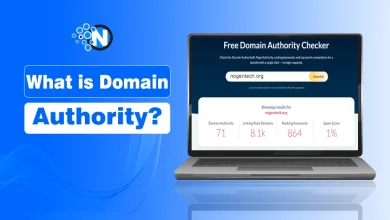How Does a Private Blog Network Work? A Complete Guide

A private blog network is always a controversial topic in search engine optimization because of its positive and negative impacts. While some people use it extensively to rank their main site, some have started discarding it as they face severe penalties from Google. As per Ahrefs, one of the most popular SEO tools, it is a black-hat technique. However, with specific cautions, you can have your hands on the desired advantages. In this guide, we will look into this strategy’s components, advantages, risks, and the best ways to implement them.
What is a Private Blog Network?
A private blog network is an extensive collection of websites with the primary role of manipulating search engine ranking algorithms to rank the website. Generally, a single user owns all the PBN sites and refers to one site. Hence, the larger number of backlinks from a strong network delivers insights to bots about the authority and helps you rank at the top for specific keywords. The major target of adopting this strategy is to boost the domain rating of a site by improving its backlink profile. Ultimately, it increases the website’s search engine visibility and captures enormous organic traffic.
How Does a Private Blog Network Work?
As mentioned, the Private Blog Network comprises a larger number of interlinked blogs usually owned by a single owner. Google and other search engines have trained their algorithms to detect the number of backlinks a site has obtained to determine its authority and rank it in the results pages. Hence, when you make a more significant number of backlinks to your leading site, you signal Google about the authority and captivity of your content and ultimately get the top position. Although search engines continuously update their algorithms and policies to detect these backlinks to ensure transparency, some SEO experts are still finding ways to boost their rankings with this strategy.
Components of a Private Blog Network

A private blog network is not simple as it accommodates different components for proper functioning. In the under-section, we have detailed them.
1 – PBN Domains
The foremost component of a PBN is to acquire expired and auctioned domains. The more sites you have, the more extensive the network and the more massive the perks will be.
2 – Content
Next, it is necessary to ensure that all websites accommodated in a PBN network have content relevant to the one posted on your main site. Hence, you can create backlinks naturally and easily.
3 – Interlinking
The last component of a private blog network is the interlinking of the sites present in the network. The more sites link with each other, the network becomes more potent and sturdy.
Advantages of a Private Blog Network
Although the PBN strategy is no longer white-hat, people are still using it to avail of the following perks.
1 – Link Authority
The PBN enables you to improve the authority of your targeted website by creating multiple backlinks in a quick session. It signals search engine algorithms and, ultimately, improves the visibility of your content.
2 – Enhanced Control
In this fast-paced and highly saturated environment, having enhanced control of the content, backlinks, and anchor texts is integral for the site’s success. Utilizing the potential of a private blog network will deliver these outcomes to you and enable you to create a proper strategy for search engine optimization.
3 – Speed
Traditional search engine optimization helps you achieve rankings more sustainably, but it takes a tremendous toll on time. On the other hand, PBNs can deliver quicker results and improve your rankings.
Risks Associated with PBNs
No matter how much beneficial PBN can become, there are always certain risks associated with this strategy. We have explained them below.
1 – Search Engine Penalties
Almost all search engines, including Google, discourage the use of PBN. Websites that are captured by bots while working on this strategy may face severe penalties, which results in the deindexing of the content.
2 – Footprint
Private Blog Networks may also leave footprints on your site, resulting in long-term penalties and no more appearance in the search engine.
3 – Low Domain Quality
The utilization of low-quality and spammy domains in a PBN network may also lead to detrimental effects on your targeted site’s SEO. Consequently, you will be unable to achieve your targeted goals.
How to Build and Manage a PBN Safely?
After researching the web and understanding the advantages and risks of a PBN network, we have enlisted the steps you can follow to build and manage a private blog network safely.
1 – Focus on Components
Firstly, you have to focus on the components of a PBN. Some of the key points are elaborated on below.
- You must research heavily to find expired websites with a history of higher authority and credibility. As a result, you will minimize the chances of getting penalized by search engines.
- Another key strategy is to generate high-quality and unique content on PBN sites. By doing it, you will be able to represent this activity as legitimate to Google.
- You must be very careful about the interlinking of PBN sites. It is essential to focus on the relevancy of the sites and content to ensure authority and legitimacy.
2 – Diversify Hosting
Another key strategy to grab extensive benefits from PBN strategy is diversifying your sites’ hosting. Choose different platforms to host the sites as well as use different IP addresses. As a result, it reduces the risk of detection.
Final Verdicts
These are the details regarding the working of a private blog network. A PBN is one of the best strategies you can opt for to rank your site in the search engine results pages. However, it is crucial to follow the perfect strategies. Otherwise, you will find terrible outcomes in the form of multiple search engine penalties and deindexing and deranking of articles. By working strategically and focusing on crucial components, you can make sure that Google won’t capture you as spam and help you rank at the top of the results.




